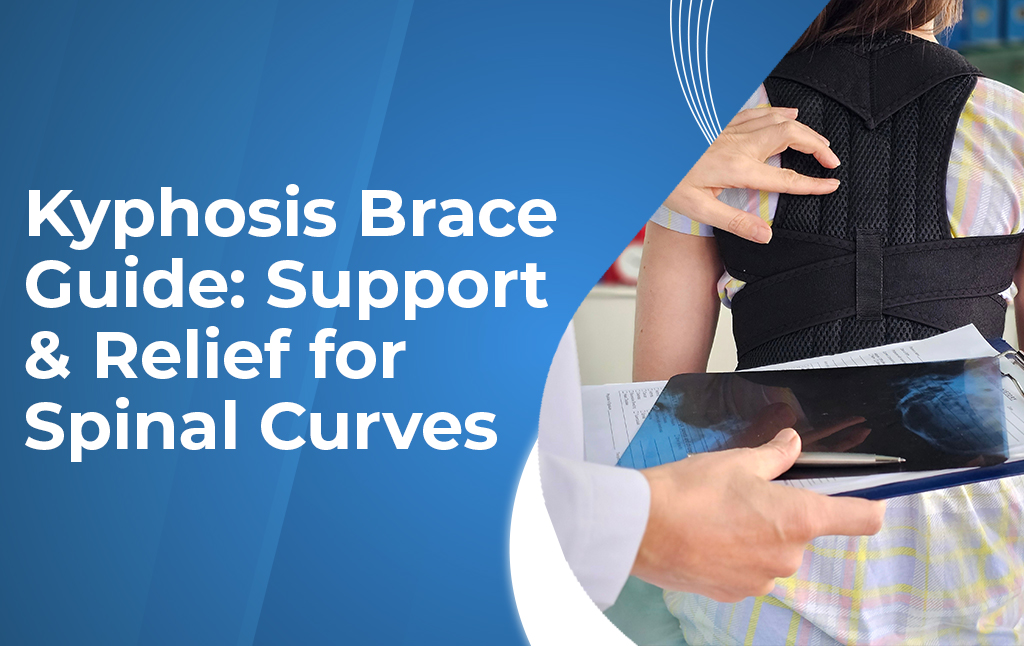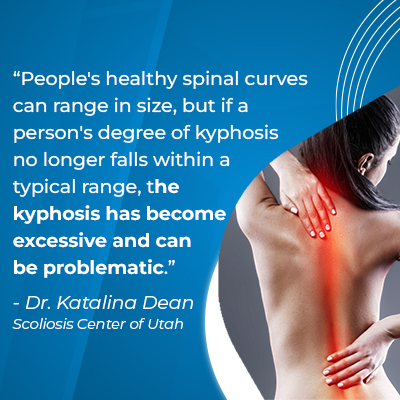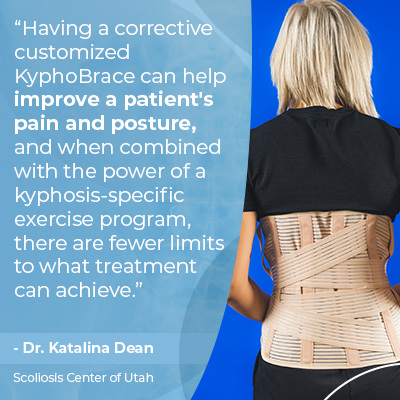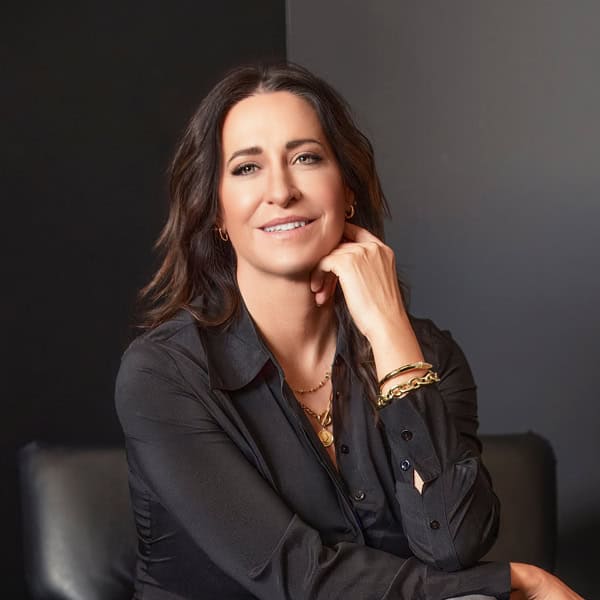Blogs
Kyphosis Brace Guide: Support & Relief for Spinal Curves

The spine’s healthy curves are key to its strength and function, so losing a single healthy spinal curve can disrupt the entire spine’s biomechanics. There are a number of healthy and unhealthy curve types, and when it comes to kyphosis, there are different types with unique causes and treatment needs. Bracing can help by applying pressure to the spine that improves its position.
Kyphosis refers to a type of spinal curve that curves outwards and affects the thoracic spine. A range of kyphosis is natural, but if a person’s kyphosis becomes excessive, this is diagnosed as hyperkyphosis, and wearing a corrective kyphosis brace may help.
Before getting to the specifics of kyphosis bracing, let’s talk about the difference between healthy and unhealthy spinal curves.
Healthy Kyphosis versus Hyperkyphosis
The spine has three main sections, and each section has unique roles to play in overall spinal function, so the health of each section’s curve shapes the health of the others.
The cervical (neck) and lumbar (lower back) spinal sections curve inwards, known as lordosis, and the thoracic spine (middle/upper spine) has a natural kyphosis, making the spine curve outwards.
The spine’s healthy curves make it stronger, more flexible, and better able to absorb and distribute mechanical stress, so the loss of a healthy spinal curve can disrupt these functions and affect the spine’s overall health.
 People’s healthy spinal curves can range in size, but if a person’s degree of kyphosis becomes excessive and no longer falls within a typical range, the kyphosis has become excessive and can be problematic.
People’s healthy spinal curves can range in size, but if a person’s degree of kyphosis becomes excessive and no longer falls within a typical range, the kyphosis has become excessive and can be problematic.
A typical range of thoracic kyphosis would fall within 20 – 45 degrees with hyperkyphosis commonly diagnosed at 50+ degrees.
If a person’s kyphosis becomes excessive, the thoracic spine is excessively rounded forward, giving the upper back and shoulders a slouching/arched appearance.
Hyperkyphosis Causes
Hyperkyphosis treatment is shaped by its cause, severity, and experienced symptoms.
The most common type of kyphosis is the simplest to treat: postural kyphosis.
Postural kyphosis is caused by chronic poor posture and can be impacted with a change in body positioning and posture.
Because postural kyphosis isn’t a structural condition, the curve is flexible and generally responds well to treatment involving lifestyle guidance and physical therapy.
Age-related hyperkyphosis occurs over time as the body is subject to degenerative changes that affect the spine and muscles/ligaments that surround the spine, providing it with crucial support and stability.
In patients with low bone density, compression caused by the hyperkyphosis can cause the front of the vertebrae to collapse: compression fracture.
Females are more vulnerable to age-related hyperkyphosis due to hormone changes and bone density loss that’s associated with menopause.
If hyperkyphosis develops in older adults, the treatment focus is on improving the spine’s stability and posture for fall prevention and pain management, and this often involves the prescription of kyphosis-specific exercise and/or kyphosis-specific bracing.
Scheuermann’s kyphosis involves a structural abnormality within the vertebrae and commonly appears during adolescence.
If the vertebrae are more triangular in shape than rectangular, this can disrupt the spine’s ability to maintain its healthy curves.
Sometimes disc damage is involved, and as Scheuermann’s kyphosis is structural, the curve is rigid but can respond well to a combination of kyphosis-specific exercise programs and a corrective KyphoBrace.
KyphoBrace for Support and Relief
The corrective KyphoBrace® is used to correct Sheuermann’s kyphosis, hyperkyphosis, and poor posture in children and adults.
Hyperkyphosis can cause postural changes and back pain, and the individualized approach of KyphoBrace means each brace is 3D custom designed to address the specifics of a patient’s hyperkyphosis.
 Having a corrective customized KyphoBrace can help improve a patient’s pain and posture, and when combined with the power of a kyphosis-specific exercise program, there are fewer limits to what treatment can achieve.
Having a corrective customized KyphoBrace can help improve a patient’s pain and posture, and when combined with the power of a kyphosis-specific exercise program, there are fewer limits to what treatment can achieve.
The goal of kyphosis bracing is to restore an appropriate degree of thoracic kyphosis to the spine, and considerations will include age.
Curve reductions are worked towards while improving posture and the spine’s balance and stability; an unbalanced spine is one that’s weaker, can become more easily injured, and is more vulnerable to degeneration and strain.
KyphoBrace Benefits
The KyphoBrace was designed with compliance in mind, so it easily opens and closes in the front for more freedom for patients not requiring as much assistance, and there are a number of patterns and colors available so patients can further customize the look of their brace.
The design of the KyphoBrace offers a number of benefits:
- Adjustable arms to help restore a straight and healthy posture
- Custom designed based on comprehensive patient measurements, scans, and postural photos
- Correction that can counteract progression and/or reduce excessive kyphosis
- Postural restoration
- Straps that are easily adjustable for an optimal fit
- Improving the spine’s sagittal balance
- Cosmetic improvements
- Pain relief
We’ve all been told to stand up straight at one time or another, but how many of us truly understand the importance of healthy posture?
Why is Posture so Important?
Posture is how we position our bodies during rest and activity, and it will impact the spine as one of its primary roles is facilitating the ability to stand upright and practice good posture.
Chronic poor posture has become an increasing problem in the modern age.
The prevalence of screen use causes people to spend more time sitting than ever before, and walking while looking down at a screen, or sitting while in a slumped position to look down at a screen, is terrible for a person’s posture, and over time, can cause the spine to shift out of alignment.
Forward head posture (FHP) can develop from hyperkyphosis and looking down too much at a screen; this increases the weight of the head on the cervical spine and can contribute to a loss of the neck’s healthy lordosis.
Hyperkyphosis can contribute to the development of forward head posture as the excessively rounded forward upper back and shoulders can cause the head to shift in an effort to preserve a level gaze.
Once the spine shifts out of alignment, it will take more than just exercise to improve its position, and this is where bracing comes in.
Movement Patterns
Poor posture can interfere with healthy movement patterns. Walking is a complex movement pattern that relies heavily on the pelvis, spine, and its surrounding muscles.
An unnatural spinal curve, such as hyperkyphosis, that makes the body shift its posture forward can cause uneven weight distribution over the pelvis and lower body, causing an uneconomical gait to develop, and this can increase natural age-related spinal degeneration due to uneven wear and tear on the spine and joints of the body.
Healthy posture means not exposing the spine, or any other area of the body, to uneven pressure and force that, over time, can cause structural changes within the spine, disrupt healthy movement patterns, affect the spine’s surrounding muscles, nerves, and lead to a number of future health issues.
Conclusion
A corrective kyphosis brace can help correct hyperkyphosis, Scheuermann’s kyphosis, or postural issues, and the KyphoBrace has become known as the world’s most advanced kyphosis brace, in part, due to its high level of customization.
The biggest challenge to bracing efficacy is that a brace has to be worn exactly as prescribed, and particularly for adolescents, wearing recommendations aren’t always followed.
To improve rates of compliance, KyphoBrace designers added straps so the brace can be easily opened/closed at the front and patients require less assistance.
The brace is made from comfortable and flexible plastic, and as each brace is designed around 3D images and scans of a patient’s torso, a custom fit offers more comfort and mobility during wear.
The importance of healthy posture can’t be overstated. The way we hold our bodies during daily activities can shape the spine’s long-term health and function, and anything that works towards restoring healthy posture can benefit the body in numerous ways.
Practicing good posture can help establish healthy movement patterns, preserve existing spinal function, and prevent the development of certain forms of hyperkyphosis.

Dr. Katalina Dean
Dr. Katalina Dean is the founder and clinical director of Scoliosis Center of Utah, in Midvale, UT. Her team specializes in posture correction, spinal rehabilitation, and non-invasive scoliosis care and bracing.
Call Today
Do You Qualify for Care?
Schedule an Appointment Below
